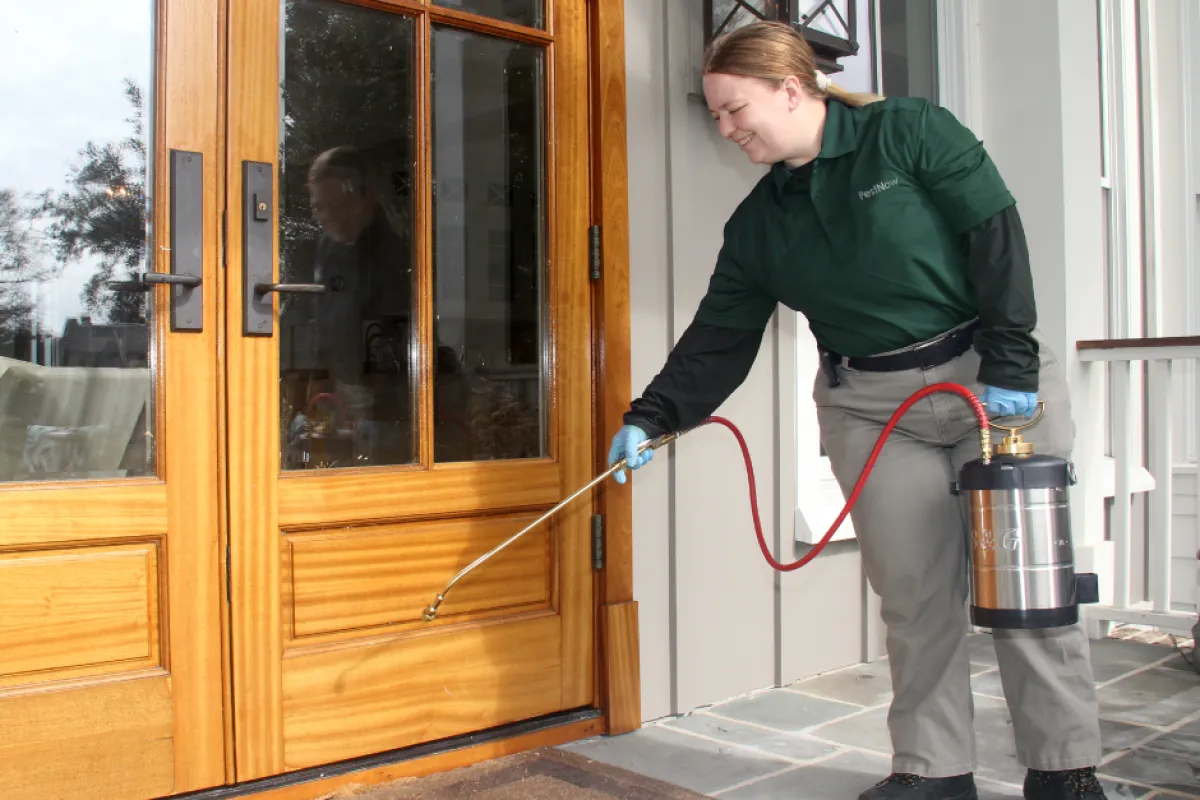Reputable A1 Bed Bug Exterminator Charlotte - Eliminate Bed Bugs Rapid
Reputable A1 Bed Bug Exterminator Charlotte - Eliminate Bed Bugs Rapid
Blog Article
Bed Bug Therapy Failure: Comparing Chemical Vs. Non-Chemical Solutions
In the world of pest control, particularly when dealing with the persistent issue of bed bugs, the selection in between chemical and non-chemical treatment remedies can be a pivotal one. Both approaches offer distinct benefits and disadvantages, affecting aspects such as efficiency, safety considerations, and total price. By checking out the nuanced details of each approach, a clearer understanding of which course to seek in addressing a bed insect infestation can be obtained.
Effectiveness of Chemical Therapies
Chemical treatments for bed bug invasions have actually been extensively recognized for their quick and powerful efficiency in eradicating these pests. When considering the effectiveness of chemical treatments, it is important to recognize that they can offer a thorough and quick option to a bed insect problem. Expert pest control specialists frequently rely on pesticides to target bed pests at different stages of their life process, including fairies, grownups, and eggs. These chemicals normally function by interfering with the bed bugs' nervous system, bring about paralysis and eventual fatality.
Furthermore, chemical treatments have the advantage of supplying recurring effects, indicating that they can proceed to get rid of bed pests also after the initial application. This residual action is specifically useful in combating any possible re-infestations. Additionally, the rapid action of chemical therapies can bring alleviation to individuals facing serious bed pest problems, permitting them to reclaim control of their living spaces swiftly.
Safety Issues With Chemical Solutions
One important element that calls for cautious consideration when making use of chemical services for bed pest therapy is making certain the safety of occupants and the setting. While chemical treatments can be efficient in removing bed bugs, they may position dangers otherwise handled properly. Among the primary safety worry about chemical options is the potential damage they can create to human health and wellness. Exposure to certain chemicals made use of in bed bug therapies can result in breathing concerns, skin irritability, or other negative responses, especially in individuals with pre-existing conditions or sensitivities. In addition, incorrect application or dose of chemical pesticides can result in toxic residues remaining in the cured location, posing lasting health risks to owners.
Furthermore, the environmental effect of chemical options is an additional considerable factor to consider. Some pesticides made use of in bed pest therapies may be hazardous to helpful bugs, wildlife, and environments if they leach right into the dirt or water systems. It is important to utilize chemical treatments judiciously, following safety and security guidelines, and considering much less poisonous choices to alleviate these dangers and guarantee the efficient and risk-free management of bed pest invasions.
Benefits of Non-Chemical Methods
Considering the prospective safety and security issues and environmental effect linked with chemical options for bed bug treatment, checking out non-chemical strategies offers an appealing alternative with a number of unique advantages. Non-chemical therapies are ecologically pleasant, as they do not contribute to air or water air pollution, making them a sustainable selection for pest control.
Furthermore, non-chemical remedies can be reliable in targeting bed bugs, including hard-to-reach locations where chemical treatments might not penetrate. Approaches such as warmth treatment, vacuuming, steam cleaning, and mattress encasements give detailed eradication without using harmful chemicals. Furthermore, non-chemical methods can be much less disruptive, needing marginal preparation and enabling quicker reentry right into dealt with locations. On the whole, going with non-chemical bed pest treatment approaches not just focuses on safety and ecological defense yet additionally ensures effective and comprehensive insect control.
Limitations of Non-Chemical Treatments

Additionally, non-chemical treatments commonly call for several applications to accomplish effective obliteration. This can be lengthy and may not constantly guarantee full elimination of all bed insects and their eggs, specifically in hard-to-reach or hidden areas.
Furthermore, the success of non-chemical therapies greatly depends on correct execution and thoroughness, which can be challenging for people without specialist competence. Poor application of non-chemical methods may lead to incomplete eradication, leading to relentless infestations and the demand for additional therapies.
Consequently, while non-chemical treatments have their benefits, it is necessary to acknowledge these restrictions and consider them when identifying the most efficient technique for handling bed insect infestations.
Price Comparison: Chemical Vs. Non-Chemical Options
Provided the limitations linked with non-chemical treatments, an important aspect to assess in the context of bed insect administration is the cost contrast in between chemical and non-chemical choices. In comparison, non-chemical therapies like heat therapy or vapor can be much more costly, with costs varying from $1,000 to $6,000 for an entire home. While the initial cost of chemical therapies Check This Out might seem lower, numerous therapies might be needed to fully eradicate the problem, possibly enhancing the general price.
Verdict

Taking into consideration the prospective safety problems and environmental influence associated with chemical remedies for bed bug therapy, discovering non-chemical methods offers an encouraging option with numerous distinct advantages.Given the constraints connected with non-chemical therapies, an important facet to review in the context of bed pest administration is the price comparison in between chemical and non-chemical options. In contrast, non-chemical therapies like warm therapy or vapor can be a lot more expensive, with prices varying from $1,000 to $6,000 for a whole home. While click over here now the initial cost of chemical treatments may appear reduced, several treatments might be needed to completely eliminate the infestation, possibly increasing the general cost.In conclusion, when comparing chemical and non-chemical bed pest therapy alternatives, it is necessary to think about efficiency, safety, benefits, limitations, and expense.
Report this page